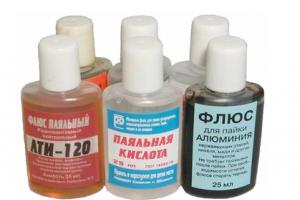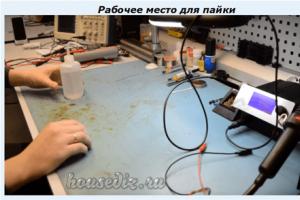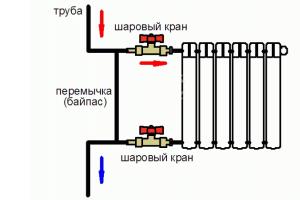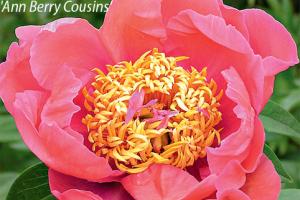We all love fresh and canned tomatoes, in salads, ketchups, and tomato pastes. Most dishes cannot do without them. Many people buy them in markets and stores or grow them themselves in gardens and greenhouses. In principle, growing tomatoes is not so difficult, but there is one of the most common diseases of these plants - late blight, which can cause great damage to your crop. And to prevent this from happening, you need to strictly follow the rules for growing tomatoes and know the techniques for preventing and treating this disease.
What is late blight and how does it manifest itself?
Late blight on tomatoes or late blight is the so-called brown rot that affects the leaves and fruits of plants such as tomatoes, potatoes, peppers and eggplants - crops of the nightshade family. It will not be possible to fight this disease with the usual anti-fungal drugs. This disease is caused by spores that live all year round in the soil, on all devices for cultivating the garden, on old vegetable tops, on the entire surface of greenhouses, that is, everywhere you can imagine.

Treatment of tomatoes from late blight is carried out with fungicides
At the early stage of infection, late blight appears as a white coating on the bottom of the leaves, and it is very difficult to detect. But the spores of these fungi spread with lightning speed, and within 3 days you can see that the leaves and fruits of the tomatoes are covered with black spots and your harvest is lost.
Favorable conditions for the development of late blight
In dry, hot weather, late blight infection of tomatoes is minimized. The spores of this fungus do not like sunlight and are inactive. But during periods of rain and fog, when air humidity rises, they “wake up” and begin their harmful effects. If it rains for more than two days, be sure that your tomatoes have already become infected with late blight.

When growing tomatoes, overwatering is much worse than underwatering.
You create a favorable environment for fungus to live and spread if you over-water your tomato beds without giving them time to dry out. Constantly moist soil and vegetable leaves are an excellent place for spores to develop. It is worth watering the plants in the morning so that the moisture is well absorbed during the day and only at the root; the leaves should not be wetted.
Tomatoes especially often succumb to disease at the end of August, when the nights are already cool, because cold and dampness are the most important pathogens of late blight. It is important to maintain the temperature regime, so it is better to grow them in greenhouses. But even in this case, there are rules: you need to ventilate the greenhouses often so that excess condensation does not accumulate and the humidity is normal.
Other reasons for the development of late blight are:
- abuse of nitrogen fertilizers;
- lack of useful microelements copper, potassium, iodine, manganese in the soil;
- bushes and many others are too densely planted.
To prevent the development of fungal diseases, preventive measures must be taken.
Prevention of late blight on tomatoes
The best treatment is prevention, so to prevent late blight from affecting the crop, you need to implement many methods to prevent the disease:
- The first stage of prevention for the next summer's harvest begins in the fall, when the last harvest is harvested and the tops are pulled out. It must be removed from the garden and burned so that fungal spores do not infect young tomatoes a year later.
- If there is excess lime in the soil, then you need to balance its composition by pouring sand into the holes.
- You should not plant tomatoes next to other nightshade crops - potatoes, eggplants, peppers. These plants are susceptible to late blight and can cause tomato diseases.
- Before planting, the soil must be disinfected with a solution of potassium permanganate.

According to the rules of agronomy and planting technology, the soil in the greenhouse must be changed every 3-4 years
In the case of growing tomatoes in a greenhouse, it is necessary to disinfect its entire structure and the soil in it in the fall. You can do this in several ways:
- remove the top layer of soil 20 cm and start new soil;
- bury the stems of dill, marigold and calendula deep into the ground so that they rot, fertilize and heal it;
- treat the entire surface of the greenhouse with solutions of phytosporin or copper sulfate.
What else can you do
- There is an opinion that late blight does not tolerate the smell of garlic, so you need to plant garlic next to the tomatoes (between the bushes or around the beds).
- The tomatoes themselves should begin to be sprayed from the very moment the seedlings are planted. A garlic solution can serve as a preventive measure: dilute 1-2 cups of chopped garlic heads and stems in a bucket of water. Water each bush with the infused solution.
- You can sow mustard next to the tomatoes in the greenhouse; it disinfects the soil very well.
- To prevent late blight of tomatoes, you can spray them with purchased products. One of these drugs is phytosporin. This is a biological product that does not contain chemicals. The solution is easy to prepare; instructions for use are always included on the packaging. Most often this is a couple of spoons of powder per 10 liters of water. This solution should be sprayed on tomatoes every 5-14 days.
- Another preventative method for late blight on tomatoes is a solution of 1 tablespoon of copper sulfate and 1 tablespoon of washing powder per 10 liters of water. Washing powder is needed so that the copper sulfate adheres better to the leaves. This is a popular antiseptic. Late blight on tomatoes manifests itself like the flu virus on humans: if the immune system is weakened, the risk of disease increases. Therefore, you should feed the soil under the plants with useful substances - iodine, manganese, copper, potassium. In greenhouses, you can hang several bottles of iodine with open lids so that it evaporates and is absorbed into the plants. Professional gardeners claim that by inserting a piece of copper wire into the trunk of a bush above the soil itself, you can saturate the plant with the required amount of copper.
- It is necessary to promptly remove the weeds under the tomatoes and the lower leaves from the bushes so that they do not come into contact with the ground and create a ventilation effect.
Varieties without late blight
Today, many hybrid varieties of tomatoes have been developed that are practically not susceptible to late blight disease. These are varieties such as Metelitsa, Budenovka, Dragonfly, Parterre, Pink Dwarf, Raissa, Kasper, Tanya, Kostroma and others. By planting these hybrids, you can protect yourself to a greater extent than if you plant conventional varieties.

Budenovka tomatoes are resistant to late blight and fruit cracking
You can use early-ripening varieties of tomatoes, which can be harvested in mid-summer, when late blight is not yet rampant. For open land plots, the varieties Alpha, Amursky Stamb, Valentina, Vzryv, Parodist, Marisha, Sanka are suitable. Other varieties suitable for greenhouses are Sugar plum raspberry, Mandarin duck, Golden brush, Poznan, Trapeza, Sweet bunch and others.
Treatment of tomatoes for late blight
If signs of late blight appear, then you need to take urgent measures to destroy it, since before you know it, all the tomatoes will be covered in black spots.
First, you need to separate diseased plants from approximately healthy ones: remove all affected leaves and fruits or entire bushes with roots from the beds, and burn them immediately. If you grow tomatoes in a greenhouse, then you need to ventilate the room well after that, reducing the humidity.
Then it is necessary to treat the still uninfected bushes with various means so that the late blight spores die and do not spread to the rest of the tomatoes. Such products can be either purchased chemical or biological, or prepared independently.

Chemicals include Quadris, Ridomil Gold, Bravo, Ditan, Hom, boric acid, Bordeaux mixture and many others. They work very quickly, but after them there are many restrictions on the use of tomatoes. Biological products consist of inactive beneficial bacteria, which, when dissolved in water, are activated and work to destroy harmful late blight fungi on tomatoes. These are products such as Fitosporin, Gamair, Trichofit, Guapsin. After them, you can immediately eat vegetables, just after washing them well.
In the long-term fight against late blight of tomatoes, many folk remedies for this fungus were invented. Tomatoes can be treated for this disease with solutions prepared at home:
- Table salt solution: dissolve 1 glass of white crystals in 10 liters of water. Spray tomatoes only after removing all infected fruits and leaves. A protective shell is created on the bushes, which does not allow late blight to multiply.
- Iodine solution: 9 liters of water, 1 liter of any low-fat dairy product (whey can be used) and a few drops of an alcohol solution of iodine. The dairy product must be low-fat; we do not need a fatty film on the plants. Iodine saturates vegetables with the necessary beneficial microelements, and lactic acid bacteria will prevent the further development of late blight. It is necessary to spray tomatoes once a week in dry weather, starting from the appearance of the first green fruits; you can alternate iodine with brilliant green.
- Yeast solution: 100 grams of this mushroom product are dissolved in 10 liters of water. This product should be used to water the bushes as soon as the first symptoms of fungus appear.
To combat late blight in greenhouses, fumigation is used: a piece of natural animal skin or wool is placed in a container with hot coals, and all windows and doors are tightly closed. The smoke kills fungal spores and prevents them from multiplying further. They also sprinkle the beds with ash after planting and a second time at the first ovary.
Remember, it is not difficult to fight late blight; you just need to follow planting rules and prevent this disease.
Astrakhan tomatoes ripen remarkably well lying on the ground, but this experience should not be repeated in the Moscow region. Our tomatoes need support, support, garter. My neighbors use all sorts of stakes, tie-downs, loops, ready-made plant supports and mesh fencing. Each method of fixing a plant in a vertical position has its own advantages and “side effects”. I'll tell you how I place tomato bushes on trellises and what comes out of it.
Flies are a sign of unsanitary conditions and carriers of infectious diseases that are dangerous to both people and animals. People are constantly looking for ways to get rid of unpleasant insects. In this article we will talk about the Zlobny TED brand, which specializes in fly repellents and knows a lot about them. The manufacturer has developed a specialized line of products to get rid of flying insects anywhere quickly, safely and at no extra cost.
The summer months are the time for hydrangeas to bloom. This beautiful deciduous shrub produces luxuriously fragrant flowers from June to September. Florists readily use large inflorescences for wedding decorations and bouquets. To admire the beauty of a flowering hydrangea bush in your garden, you should take care of the proper conditions for it. Unfortunately, some hydrangeas do not bloom year after year, despite the care and efforts of gardeners. We will explain why this happens in the article.
Every summer resident knows that plants need nitrogen, phosphorus and potassium for full development. These are three main macronutrients, the deficiency of which significantly affects the appearance and yield of plants, and in advanced cases can lead to their death. But not everyone understands the importance of other macro- and microelements for plant health. And they are important not only in themselves, but also for the effective absorption of nitrogen, phosphorus and potassium.
Garden strawberries, or strawberries, as we used to call them, are one of the early aromatic berries that summer generously gifts us with. How happy we are about this harvest! In order for the “berry boom” to repeat every year, we need to take care of the berry bushes in the summer (after the end of fruiting). The laying of flower buds, from which ovaries will form in the spring and berries in the summer, begins approximately 30 days after the end of fruiting.
Spicy pickled watermelon is a savory appetizer for fatty meat. Watermelons and watermelon rinds have been pickled since time immemorial, but this process is labor-intensive and time-consuming. According to my recipe, you can simply prepare pickled watermelon in 10 minutes, and by the evening the spicy appetizer will be ready. Watermelon marinated with spices and chili can be stored in the refrigerator for several days. Be sure to keep the jar in the refrigerator, not only for the sake of safety - when chilled, this snack is simply licking your fingers!
Among the variety of species and hybrids of philodendrons, there are many plants, both gigantic and compact. But not a single species competes in unpretentiousness with the main modest one - the blushing philodendron. True, his modesty does not concern the appearance of the plant. Blushing stems and cuttings, huge leaves, long shoots, forming, although very large, but also a strikingly elegant silhouette, look very elegant. Philodendron blushing requires only one thing - at least minimal care.
Thick chickpea soup with vegetables and egg is a simple recipe for a hearty first course, inspired by oriental cuisine. Similar thick soups are prepared in India, Morocco, and Southeast Asian countries. The tone is set by spices and seasonings - garlic, chili, ginger and a bouquet of spicy spices, which can be assembled to your taste. It is better to fry vegetables and spices in clarified butter (ghee) or mix olive and butter in a pan; this, of course, is not the same, but it tastes similar.
Plum - well, who isn’t familiar with it?! She is loved by many gardeners. And all because it has an impressive list of varieties, surprises with excellent yields, pleases with its diversity in terms of ripening and a huge selection of color, shape and taste of fruits. Yes, in some places it feels better, in others it feels worse, but almost no summer resident gives up the pleasure of growing it on his plot. Today it can be found not only in the south, in the middle zone, but also in the Urals and Siberia.
Many ornamental and fruit crops, except drought-resistant ones, suffer from the scorching sun, and conifers in the winter-spring period suffer from sunlight, enhanced by reflection from the snow. In this article we will tell you about a unique product for protecting plants from sunburn and drought - Sunshet Agrosuccess. The problem is relevant for most regions of Russia. In February and early March, the sun's rays become more active, and the plants are not yet ready for new conditions.
“Every vegetable has its own time,” and every plant has its own optimal time for planting. Anyone who has dealt with planting is well aware that the hot season for planting is spring and autumn. This is due to several factors: in the spring the plants have not yet begun to grow rapidly, there is no sweltering heat and precipitation often falls. However, no matter how hard we try, circumstances often develop such that planting has to be carried out in the midst of summer.
Chili con carne translated from Spanish means chili with meat. This is a Texas and Mexican dish whose main ingredients are chili peppers and shredded beef. In addition to the main products there are onions, carrots, tomatoes, and beans. This red lentil chili recipe is delicious! The dish is fiery, scalding, very filling and amazingly tasty! You can make a big pot, put it in containers and freeze - you'll have a delicious dinner for a whole week.
Cucumber is one of the most favorite garden crops of our summer residents. However, not all and not always gardeners manage to get a really good harvest. And although growing cucumbers requires regular attention and care, there is a little secret that will significantly increase their yield. We are talking about pinching cucumbers. Why, how and when to pinch cucumbers, we will tell you in the article. An important point in the agricultural technology of cucumbers is their formation, or type of growth.
Now every gardener has the opportunity to grow absolutely environmentally friendly, healthy fruits and vegetables in their own garden. Atlant microbiological fertilizer will help with this. It contains helper bacteria that settle in the root system area and begin to work for the benefit of the plant, allowing it to actively grow, remain healthy and produce high yields. Typically, many microorganisms coexist around the root system of plants.
Summer is associated with beautiful flowers. Both in the garden and in the rooms you want to admire the luxurious inflorescences and touching flowers. And for this it is not at all necessary to use cut bouquets. The assortment of the best indoor plants includes many beautifully flowering species. In the summer, when they receive the brightest lighting and optimal daylight hours, they can outshine any bouquet. Short-lived or just annual crops also look like living bouquets.
Late blight on tomatoes This is the most harmful disease of tomatoes. How to treat plantings against late blight? What effective modern chemical and biological products should I choose? Do folk remedies help against late blight on tomatoes and which ones are used? Prevention measures to prevent the appearance of late blight on your site in the future. What varieties of tomatoes are resistant to late blight, so as not to repeat mistakes?
Late blight or late blight (pathogen Phytophthora infestans) is a fungal disease well known to every gardener.
Late blight is the most insidious disease of tomatoes, capable of causing significant damage or even destroying almost the entire tomato crop. Therefore, it is important to prevent the spread of late blight on tomatoes and pay attention to prevention.
But if they have already appeared signs of late blight on leaves or even fruits, urgent measures need to be taken to save the crop.
We will not repeat ourselves about the main signs of late blight, because you can read the following articles on our website in more detail about this:
 |  |  |
Fighting late blight on tomatoes
The earlier the disease is detected, the greater the chance of saving your tomatoes and avoiding the spread of the disease. If there are obvious signs of late blight, the plant impossible to cure. The main thing is to delay the spread of infection, otherwise you may lose the entire harvest. Diseased leaves must be removed immediately upon detection. This must be done extremely carefully, as fungal spores can get on healthy plants. If there are buds on infected bushes, they need to be cut off, since the ovaries become diseased faster than the fruits.
Treatment must begin with the immediate collection of all unripe fruits. Sort out whole ones that have not yet become infected with the disease and place them in hot (about 65°C) water for 2-3 minutes. Then the tomatoes must be thoroughly wiped, dried and left at room temperature. Otherwise, there is a risk of losing the entire harvest.
The next stage is treating the plants with a late blight remedy.
How to treat tomatoes against late blight in a greenhouse
Preparations used for late blight: , Hom, Ordan, Oksikhom, Quadris, Profit Gold, Revus. Repeat the treatment once every 7 days (the number of treatments is according to the instructions for the drug).
From biological products are used : Alirin B, Gamair, Fitosporin M, Trichodermin.
Very effective use against late blight in a special greenhouse tobacco checker. The bomb is burned in a greenhouse containing infected tomato bushes.
Interesting video about tobacco shank.
Treatment of tomatoes against late blight in open ground
The same fungicides are used ( , Hom, Ordan, Oksihom, Quadris, Profit Gold, Revu), but they are used in a stronger solution concentration. All recommendations for the use of drugs for open or buried ground are indicated in their instructions.
Preparations against late blight of tomatoes
Treatment of tomatoes against late blight can be carried out as follows: biological products, so and chemicals. (fungicides). Biological products are somewhat weaker than chemical ones, but safer. Disease control chemicals may persist in fruit tissue up to 30 days.
Recently, folk remedies are often used to treat tomatoes against late blight. Let's look at what and how to treat tomatoes with preparations.
Biological products against late blight
There are more modern and environmentally friendly methods of combating late blight and other fungal diseases - with the help of biological preparations. They contain living microorganisms that feed on fungal spores. And if chemical plant protection products suppress almost all the simplest soil fungi, including useful ones, then biological preparations do not allow pathogenic fungi to spread.
Among the biological products against late blight, the following are used:
- Alirin-B- a biological preparation against plant diseases, contains the bacteria Bacillus subtilis. Consumption rate for late blight: 2 tablets per 10 liters of water when watering plants, and 2 tablets per 1 liter of water when spraying. Repeated treatment after 5-7 days, up to 3 treatments in total.
- Gamair- biological preparation against late blight, drug consumption - 1 tablet per 5 liters of water when watering, and 2 tablets per 1 liter of water when spraying. Treatments are repeated every 7 days, three times.
- Fitosporin-M- biofungicide in the form of a dark brown paste, liquid or powder. In gardening, either powder or paste is used. (more details below)
Read more about Fitosporin-M for late blight
Phytosporin is especially popular for the treatment and prevention of late blight on tomatoes. Fitosporin-M has a weaker effect compared to chemicals. It rather only suppresses the infection, but this drug is simply irreplaceable in organic farming. You can spray the plants and water the soil regularly. Tomato bushes can be treated with phytosporin during fruiting. If the product gets on the fruits, they can be used for food even on the day of treatment (there is no waiting period).
For spraying, dilute 10 g of powder per 5 liters of water, paste 3 teaspoons of concentrate per 10 liters of water. It is important to spray in the evening, preferably when it is already getting dark - the bacterium quickly dies in the light. If your tomatoes are planted in open ground, do not spray in cold weather.
The drug Fitosporin-M is compatible with many chemicals:
- insecticides - Decis, Aktara, Fitoverm;
- fungicides - Strobi, Quadris, Tilt premium, Fundazol, Vitivax 200.
- with fertilizers and growth regulators (Zircon, Ribav-Extra, Epin, Obereg, Plantafol);
- antibiotic drugs - Fitolavin.
It is important not to combine with solutions that have an alkaline reaction!
It should be noted that some variants of Fitosporin-M contain GUMI (humic acids), for example Fitosporin-paste. In this case, it is not advisable to combine them with growth stimulants.
Chemicals against late blight on tomatoes
- Bordeaux mixture. A contact action product that has been tested for years. Excellent protection for tomatoes from fungus. In addition, the composition effectively helps in the fight against the most common diseases.
- Oksikhom(copper oxychloride + oxadixil) is a contact-systemic fungicide against late blight. Dilute 1 packet (4 grams) per 2 liters of water. Plants are sprayed as necessary up to three times with an interval of 10-14 days.
- Ordan– (copper oxychloride + cymoxanil) – in the form of a wetting powder. Spray twice with an interval of 7-14 days, at the rate of 25 g per 5 liters of water.
- Ridomil Gold(mancozeb + mefenoxam) - a combined fungicide against late blight, a very effective remedy, for personal households it is available in 10 g bags. You need to dilute 1 bag (10 g) in 2 liters of water. This is enough to process 40 square meters. m. planting tomatoes. Spray the first time when the tops of the bushes close in the beds, the second time after 10-14 days.
- Quadris– a new systemic product with a wide spectrum of effects that can protect plants from many diseases. It belongs to a new class of funds - strobilurins. The composition, as soon as it hits the foliage, suppresses painful pathogens. Its effect helps stop the spread and development of infections in the beds. The drug belongs to Hazard class 2, so you need to use it carefully, following the instructions for use.
- Acrobat. Today it is used from late blight more often. The product is especially popular in the southern regions of the country. Fungal bacteria have not yet been able to acquire resistance to this product.
Effective remedies for late blight on tomatoes
- If the plants are severely damaged, spraying the tomatoes with a solution of potassium chloride can help. This method has long been successfully used by a famous gardener. Kizima Galina Alexandrovna.
To prepare the solution, you need to dilute 200 ml (1 bottle) of a 10% preparation in 2 liters of water. Both the fruit and the stalk should be sprayed
- Also effective is the method of burning special tobacco checker. This method is suitable only for greenhouses(see video above).
Folk remedies for late blight on tomatoes
Iodine for late blight on tomatoes
If signs of the disease appear, it is necessary to immediately spray the plantings with a solution of 5% iodine. For a bucket of water (10 l), 1 jar (10 ml) is enough. After a few days, the treatment must be repeated.
Milk and iodine for late blight
Recipe 1: For 10 liters of water - 1 liter of low-fat milk + 20 drops of iodine. Treatment of plants with this composition can be carried out once every 5-7 days.
Recipe 2: Pour 1 liter of skim milk into 10 liters of water and add 15 drops of iodine. The resulting solution is sprayed on the plants every 2 weeks. This iodine-milk preparation not only kills germs, but also accelerates the growth of green pets.
Late blight serum
The whey from sour milk is diluted with water in a 1:1 ratio and from the beginning of July the plants are sprayed every 2-3 days.
Boric acid from late blight
To prevent disease, seedlings are sprayed with 0.5% boric acid immediately after planting. The treatment is repeated every fourteen days with a one percent solution until the tomatoes begin to ripen.
Trichopolum from late blight of tomatoes
This drug (and its analogue, Metronidazole) can be bought at the pharmacy. 1 tablet of Trichopolum is dissolved in 1 liter of water and the tops are sprayed with this liquid once every 2 weeks. The drug is quite effective against the causative agent of late blight. But gardeners should be aware that the use of medicines in professional agriculture is prohibited. And there are good reasons for this.
Soda for late blight
Using a soda-soap solution against late blight:
- For 1 l. warm water, add 1 tbsp. vegetable oil, 1 glass of liquid cosmetic or laundry soap. Stir, add 2 tbsp. baking soda.
- Treat the soil around the plant and the tomatoes themselves once a week until late blight disappears.
- You can enhance the effect of the solution by adding 0.5 matchbox of copper sulfate to the mixture. Seedlings can be sprayed with this solution once a week.
Copper wire against late blight of tomatoes
The most common way to combat tomato late blight is by spraying with fungicides that contain copper (Bordeaux mixture, Abiga-Peak, HOM - copper oxychloride, and others).
Copper is a trace element that, among others, is necessary for every plant. As part of oxidative enzymes, it enhances metabolism, increases chlorophyll content, and improves immunity. But the most important quality is that copper cannot be tolerated by fungi, which include late blight - late blight.
Recently, many people have been recommending the use of copper wire. Opinions are contradictory, but how does this affect tomatoes? The plant is injured and the trunk is pierced at the very bottom of the stem. In fact, the tomato body mobilizes in order to somehow overcome the problem and successfully bear fruit, and begins to work “for seeds” - this is such a program for all plants, if wounded, immediately switch to abundant fruiting (that’s why the advice is so common - an apple tree doesn’t bear fruit, kill nail in it).
But whether copper is involved as an element for feeding the bush is a controversial issue.
The technology for performing this operation is clearly visible in this video:
Basic methods of combating late blight of tomatoes
The main methods are preventing its appearance on your site. What needs to be done to avoid the danger of diseases in tomatoes in the future and have a good harvest without unnecessary worries.
The season will end soon, which means it's time to think about next year's tomato harvest. Therefore, you need to know exactly and carry out measures to prevent late blight of tomatoes on your site. And even if your tomatoes were not affected by late blight this year, the insidious fungus can come either from seedlings or from other crops. In any case, we advise you to study preventive measures.
Choosing a location, proper care and the best neighbors
- Maintain crop rotation - grow tomatoes for no more than 4 years in one place.
- Do not plant next to or after potatoes, eggplants and peppers.
- The best predecessors are cucumbers, onions, carrots, beets, turnips or cauliflower;
- Grow disease-resistant and early varieties of tomatoes.
- Potatoes must be treated against late blight. Since from it late blight spreads throughout the entire area.
- Ventilate the greenhouse regularly to avoid condensation.
- Fungal diseases develop well in high humidity and dense plantings.
- Water at the roots so that water does not get on the stems and leaves.
- Mulch the soil, do not allow the soil to become waterlogged.
- Regularly remove shoots and lower leaves.
- When pinching, treat the instrument with a solution of potassium permanganate for disinfection.
- If the disease spreads, burn the infected tops and disinfect the greenhouses.
- Do not grow in low-lying areas, where the air and soil are more humid.
- Do not apply nitrogen fertilizers in the second half of the growing season. Excess nitrogen promotes the development of late blight
- You can plant onions, garlic, marigolds, calendula, and mustard next to the blowing plants.
Protecting tomatoes from late blight in the greenhouse
Temperature changes in the greenhouse create favorable conditions for the development of late blight. Most often this happens at the end of summer. Falling dew increases the chances of late blight several times. Therefore, during the daytime, the greenhouse must be ventilated periodically.
Plants need to be watered in the first half of the day so that the moisture is absorbed into the soil or evaporates during the day. If the weather is damp and cloudy, it is better not to water the tomatoes at all.
Prevention of late blight on seedlings
Plant protection from late blight and other diseases should be carried out at different stages: soaking seeds, when planting seedlings, regular treatment of planted plants.
A humid August with differences in night and day temperatures, heavy dew and rain is common in central Russia. It is at this time that bushes of ground and greenhouse tomatoes are most often affected by late blight. Is it possible to save the harvest if the fungus has already developed thoroughly, or all the efforts made will not be justified - this is what we will talk about today.
The first sign of late blight is the appearance of brownish necrotic spots on the leaves and fruits, mainly along the edges. After some time, a whitish coating forms on the affected areas on the lower sides - a sign of sporulation of the fungus. Eventually, the diseased parts dry out and turn black.
Phytophthora has already appeared, there is no time to think about preventive treatments, about which numerous commentators on Youtube hum soothingly in a measured, unhurried tone, we need to “ring all the bells” and take active action as soon as possible:
- Immediately tear off diseased leaves and place them in a trash bag. Wear disposable plastic gloves, similar to those used when coloring hair (sold in packs of 100). You can use rubber gloves, but after contact with late blight, disinfection is required; the fungus is extremely tenacious (treat with soapy water, wipe with 9% vinegar). Do not work in cotton gloves under any circumstances, so as not to spread the infection throughout the garden with your own hands.
- Pick all good tomatoes immediately and disinfect them. Use a saline solution (1 cup of salt per 10 liters of warm water). Immerse the fruits for 10 seconds. After this, dry the tomatoes; a protective salt film will remain on them. You can use potassium permanganate. All tomatoes removed from diseased bushes should be dipped in a pink solution of potassium permanganate for 10-15 seconds, dried and left to ripen. It is better to wrap each fruit in a separate piece of paper, leaving the top open (for breathing). If 1 tomato gets sick, the rest of the crop will not be affected. Stored tomatoes from infected plants should be periodically sorted and inspected.
- Let's return to the bushes, which have already had visible diseased parts torn off. Use yeast. Dilute a 100 g package of compressed yeast in a small amount of water heated to +38 C. Dilute the resulting solution in a 10 liter bucket of water. For watering, use a watering can with a sprayer or a spray bottle. Perform the treatment on the leaf, be sure to get it on the trunk (the disease often rises from the ground along it). Result: beneficial fungi will begin to displace harmful ones.
- After 2 days, carry out iodine treatment. Dilute a small 10 ml bottle of iodine in 10 liters of water. Spray thoroughly. In addition to the leaves, you also need to cultivate the ground around it. To do this, use potassium permanganate (pink solution) or copper sulfate (1 tbsp per 1 bucket of water). All treatments are good for the greenhouse; rain will reduce their effectiveness. Take this into account in the OG.
- Phytophthora fungus does not tolerate acidic environments. Use kefir, whey or milk starter. Fermented lactic acid and bifidobacteria remain on tomatoes and completely displace late blight. The smell will be unpleasant for several days. Recipe: dilute 2 liters of fermented milk product in 10 liters of water. The solution is non-aggressive and will not harm the plant. Be sure to add 10 drops of iodine or brilliant green per 10 liters of the finished mixture (alternately add iodine and brilliant green during subsequent treatments). Treat the leaves, stems, fruits, and the ground around with the resulting solution. Repeat the procedure once a week. Use a spray bottle.
And one more tip that will help preserve the harvest. Dip constantly rotting tomatoes collected from disease-affected bushes into water heated to +60 C for 2 minutes. After this, dry the fruits and store them in another clean place. New rot will stop appearing.
A gardener grows his vegetables from seeds and monitors them until harvest. What to do if late blight appears on tomatoes, how to fight it? The danger of this disease is obvious. The fruit turns black and rots, infecting all neighboring tomatoes. This way you can lose the entire harvest.
Late blight may initially be invisible, because the disease is spread by spores that are found in the soil and on the greenhouse structure itself, as well as on seeds. Everything that will come into contact with the plant or be in close proximity must be treated. We must not forget that late blight spores are very tenacious.

The main signs of late blight:
- brown, black, green or whitish hard spots on green fruits;
- rapid increase in spots and penetration of the disease into the middle of the fruit;
- distribution of brown spots along the edges of leaves and stems;
- leaves dry out and turn yellow;
- white coating on the underside of the leaf.
To avoid such a dangerous tomato disease, it is necessary to choose the right neighbors for the seedlings. Under no circumstances should you plant potato or eggplant beds nearby, because late blight settles on them, and after a week it will certainly spread to tomatoes.

The room should be well ventilated. The higher the level of planting density, the less ventilated the greenhouse space is.
Fungal spores thrive in calcareous soils, so you should not get carried away with the procedure of alkalizing the soil. You need to plant strong and healthy plants, then the risk of damage will be minimal. Especially if the seedlings lack useful microelements: iodine, manganese, potassium or copper.
In addition to all the favorable conditions described above for the development of the fungus, late blight often affects even protected soil. A lot of condensation accumulates under film shelters, which is why the humidity level there is very high. Water is the best conductor for fungal spores, through which it reaches the mouth of the plant and penetrates it, growing into the tissue.

If you do not spray the seedlings, you may miss the deadline for quickly controlling the plant. In addition to this preventive measure, it is better for a beginning gardener to choose fungus-resistant hybrids and different varieties of tomatoes.
Vegetable testing
Such signs at the first stage of disease development do not always indicate infection with late blight. For example, blackening of fruits can be caused by rot, high levels of humidity or dry soil, and it is also a consequence of excessive amounts of fertilizer applied.
The infected plant must be carefully examined. With dry blossom end rot, the damage spreads to the entire fruit and it turns black. But the tomato pulp should be firm and absolutely free of juice. This phenomenon occurs when there is an excessive amount of fertilizer, after which soil salinization occurs.
If there are black tomatoes on the plant, and the roots have come out to the surface of the dry soil, this is not late blight. The plant simply does not have enough moisture, so it gets it from the air. Blackness may also be present on tomato fruits that are deficient in boron and magnesium. Therefore, the way out of this situation is to periodically fertilize the plants with fertilizer.

Effective fight plan
It is necessary to combat late blight on tomatoes from the first days of seed life. These procedures are carried out constantly and at certain intervals. After all, it is almost impossible to cure a diseased plant, and the infection process occurs very quickly. In the early stages, the fight against late blight on tomatoes comes down to conventional prevention. Then you can use different means to spray the plant or greenhouse.
A novice gardener will grab his head from so many precautions, but how to deal with late blight using other methods? Only carefully planned actions in combination with biologically active drugs or folk remedies will help get rid of the dangerous fungus.

This does not close the question of how to protect tomatoes from infection. Here you need to think through every step. For example:
- selection of seeds and their processing;
- planting and fertilizing seedlings;
- hardening of plants before planting;
- correct hole depth and row spacing;
- soil composition and its treatment;
- care in the first 2 weeks after disembarkation;
- preparation of equipment and greenhouse;
- temperature and humidity in the greenhouse;
- quantity and frequency of fertilizers against late blight, as well as their nature;
- plants that are planted nearby;
- predecessors that were planted 1-2 years earlier;
- climate.
Greenhouse treatment
Before planting hardened plants in a greenhouse, it is necessary to prepare the soil and build a greenhouse. The structure must be comfortable and airtight so that frost or cold air cannot penetrate through the cracks. But at the same time, the structure must have several windows for ventilation.
Spraying tomatoes against late blight also includes preventive treatment of the greenhouse. If the structure has been in use for more than a year, before the start of the season it must be cleaned of dust, dirt and cobwebs. This must be done not only from the inside, but also from the outside.
Then you can protect tomatoes from late blight by fumigating the greenhouse. Place several burning coals and a small piece of woolen material in a bucket. Before the procedure, all windows and doors of the greenhouse are tightly closed for a day, and a bucket of smoldering material is left inside.
The beds can be sprinkled with a mixture of ash and tobacco dust. To obtain such a product, you need to take 2 cups of tobacco dust into a bucket of ash. The gardener must use a gauze bandage. Such simple, and sometimes extreme, methods can protect the crop from tomato disease. Therefore, before treating tomatoes against late blight, pay attention to the greenhouse itself.
Plant care
Before plunging into the problem of plant treatment, it is necessary to constantly inspect the bushes for humidity levels. If the lower leaves around the edges are wet, this is the first sign of a possible infection. The main signal, followed by treatment of tomatoes against late blight. The gardener should not overwater the plants.
You should never plant seedlings in a greenhouse in which last year's crop suffered from late blight. Before treating tomatoes against late blight, it is necessary to completely remove the top layer (5 cm) of soil. In this case, it is better to use seeds that are already 2-3 years old, since within a few years they cease to be a source of viral or fungal diseases.
It is best to select a place for a greenhouse where nightshade crops have not grown before: peppers, potatoes, tomatoes, eggplants. All last year's plants must be collected and burned. In order not to think later about how to save yourself from late blight on tomatoes, you need to dig up the soil well for the winter. This will destroy fungal spores.
Seedlings can be planted only after hardening: a frail plant is a weak link that can become a target for fungus. Moreover, you cannot plant seedlings very densely. Always follow the planting patterns indicated on the seed packets. Before lowering the plant into the hole, remove the lower and old leaves down to 2-3 clusters. This will give more strength to the tomato, because it will not need to provide moisture and nutrients to the extra leaf. Water only the root, not the leaves or stem, as this can cause tomato diseases.
Plant care involves timely watering and ventilation of the greenhouse. So, adult tomatoes are watered rarely, but abundantly.
Don't forget about mulching the soil, but this procedure is carried out only with mature and strong plants. Treatment of tomatoes against late blight involves the correct technology of fertilizing with fertilizers (phosphorus, potassium, copper sulfate). This is done in cloudy, rainy weather.
How to save tomatoes from late blight (video)
Spraying plants
To defeat late blight of tomatoes, treatment must be carried out constantly, changing it from year to year. It is necessary to spray tomatoes against late blight at the stage of planting in the soil. For this purpose, store-bought solutions are used or prepared according to folk recipes.
- The first enemy of fungal spores is garlic. Garlic heads and shoots are used. Take crushed heads and shoots (1.5 tbsp) into a bucket (10 l) of water. The mixture is infused for 24 hours and filtered. Then 2 g of potassium permanganate is added there. For late blight on tomatoes, the plant is sprayed with garlic solution when the ovary has formed, and the next time this is done after 10 days. It is better to carry out this procedure once every 2 weeks.
- The question of what to spray tomatoes with can be answered with ordinary salt. You need a glass of table salt per 10 liters of water. This solution creates a protective film on the leaves, which blocks the path of spores to the mouth of the plant. You need to spray healthy bushes, because this is prevention, not treatment of the disease.
- It is effective to treat tomatoes against late blight with common ash. Half a bucket of ash is diluted in 10 liters of water. This solution is infused for 3 days, remembering to stir from time to time. Then the mixture is diluted with another 20 liters of water and 35 g of laundry soap is added. Before treating tomatoes against late blight, you need to wait until the plant has taken root. Then spraying is carried out just before flowering and after the formation of the ovary.
- The next recipe is a little extreme. It is necessary to fill 1 kg of rotted hay with 10 liters of water, add 100 g of urea. The solution should be infused for 4 days. After this, the liquid must be filtered.
Purchased solutions
It is easier to buy ready-made drugs and dilute them according to the instructions. For example, fungicides are recognized as the most effective. They are used 2-3 weeks before planting seedlings in a greenhouse and 2 weeks after that.
Many gardeners use old proven methods to combat this problem. When the root system dries out, prepare a solution of Furacilin, which is used to spray the seedlings. It is necessary to dilute 2 tablets in 0.5 liters of water. Furacilin effectively copes with the fungus, like Trichopolum.
Metronidazole is a synthetic antibacterial agent, which, according to gardeners, actively copes with plant diseases. Its second name is Trichopolum. The plant is sprayed with a solution every 2 weeks. To prepare, you need to dilute Trichopolum (1 tablet) in 1 liter of water. This antifungal agent has a very bitter taste, but is suitable for both people and plants. For an increased dose, use Trichopolum (20 tablets) per 10 liters of water. All these drugs are cheap and available.

Folk remedies
Many vegetable growers fight late blight using inexpensive means: iodine and kefir. Since the main causes are fungal spores, they need to be killed and not allowed to reproduce. If you dissolve iodine (15 drops) and skim milk (1 l) in 10 liters of water, you will get an excellent product for spraying seedlings. It is important to remember that you need to take 5% iodine.
And if you leave 10 liters of water with 1 liter of kefir for 2 days, you can get an excellent recipe for late blight spores. This is how one of the vegetable growers fought with cheap methods, alternating store-bought drugs with folk remedies (iodine, milk, kefir and salt), then recommending this method to other gardeners.
If you launch an extensive and timely “campaign” to combat diseases and pests of tomatoes, you can harvest healthy fruits on your site. But it should be remembered that it is better to prevent diseases than to actively treat them. Late blight is very difficult to treat, and eliminating the infection is quite difficult.
Late blight on tomatoes (video)
Related posts:
No similar entries found.








